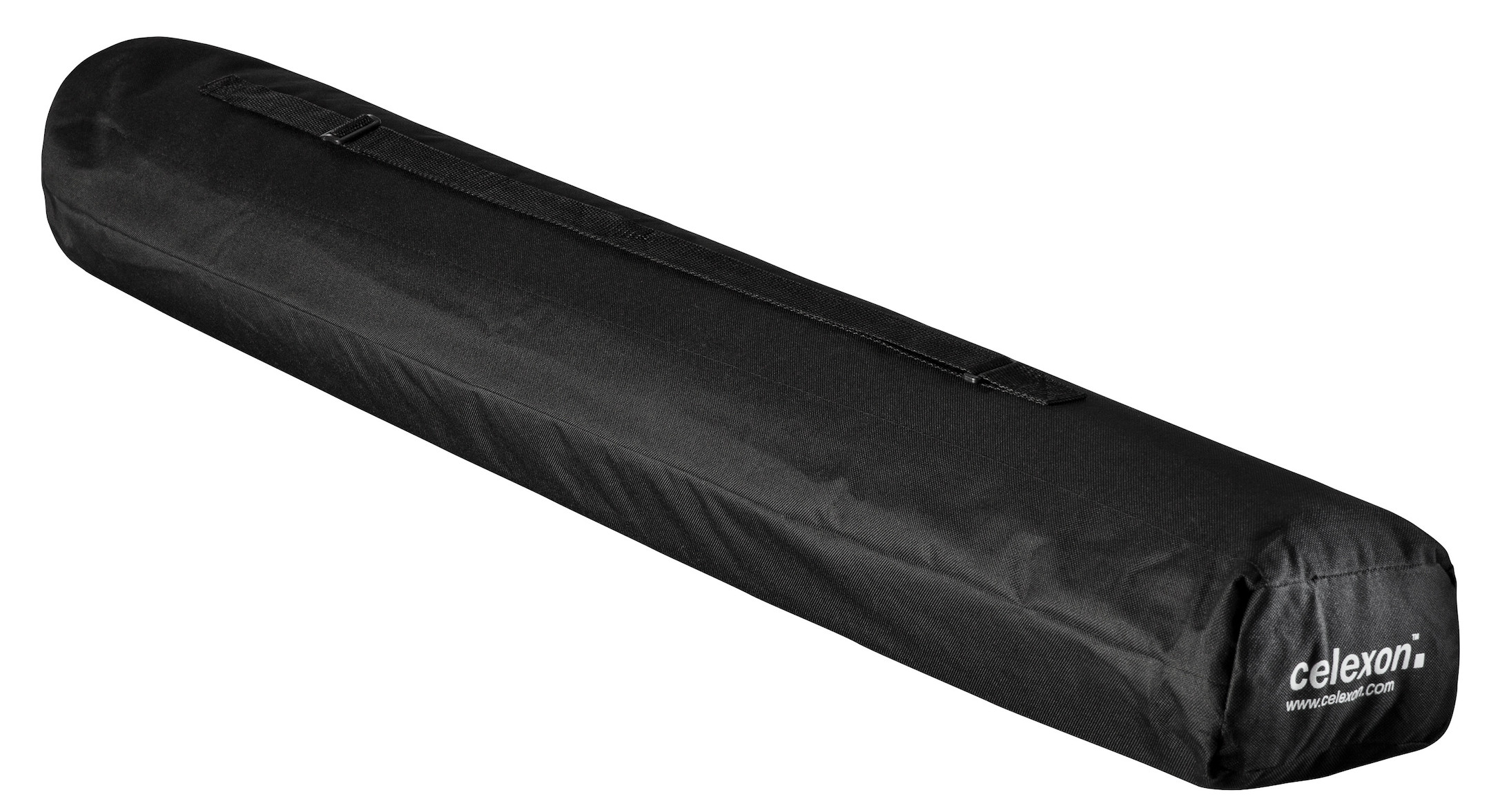



























£74.99*
- Screen type Mobile, Tripod
- Technology Front projection
- Aspect Ratio 16:9
- Gain factor 1.2


Frequently purchased together
Product information
celexon Tripod screen Ultra Light-weight 177 x 100cm
The Ultra Light-weight celexon tripod screen is designed for mobile applications. Whilst not in use it boasts a very small pack size and light carrying weight. Whenassembled, the robust tripod legs, fibreglass fabric and 1.2 Gain factor combine to create an optimum projection experience.
The Ultra Light-weight tripod screen is height-adjustable. The fabric is supplied in a plastic sleeve and for extra protection, a robust protective shipping tube. The tripod legs fold away and fit comfortable with the screen fabric in the carry case provided. The pack dimensions are under 120 x 15cm with a weight of less than 5kg.
Key features:
· 177 x 100cm viewing area
· 16:9 format
· Robust fibreglass fabric with 1.2 gain at 120° viewing angle
· 4 rods with spring system tension to hold the screen taut
· Set up in less than 3 minutes
· Tripod foot radius: 37cm
· Includes black soft case for transportation and storage
· Extremely portable – less than 5kg
Technical data
| Name | celexon Tripod screen Ultra Light-weight 177 x 100cm |
|---|---|
| Article number | 1091477 |
| GTIN/EAN | 4260094736513 |
| Manufacturer SKU | 1091477 |
| Model name | 1091477 |
| Projection Distance | Long Throw , Short Throw |
| Brand | celexon |
| Product Type | Projection screen |
| Product Series | celexon Tripod Ultra-lightweight |
| Screen type | Mobile , Tripod |
| Technology | Front projection |
| Screen fabric | matt white fibre |
| Aspect Ratio | 16:9 |
| Viewable Area - Width | 177 cm |
| Viewable Area - Height | 100 cm |
| Black border - Top | 3.5 cm |
| Black borders - Left/Right | 3 cm |
| Black border - bottom | 3.5 cm |
| Gain factor | 1.2 |
| Viewing angle - Horizontal | 120° |
| Features | Black backing |
| Product width | 114 cm |
| Product height | 19.5 cm |
| Product depth | 13 cm |
| Weight | 4.9 kg |
| Colour | Black |
| Condition | New |
| Warranty | 24 Month |
| Warranty type | Bringin service Service and support information |
Product safety
| Person responsible for the EU |
|---|
| celexon Europe GmbH |
| Gutenbergstraße 2 |
| 48282 Emsdetten |
| Germany |
| info@celexon.de |




